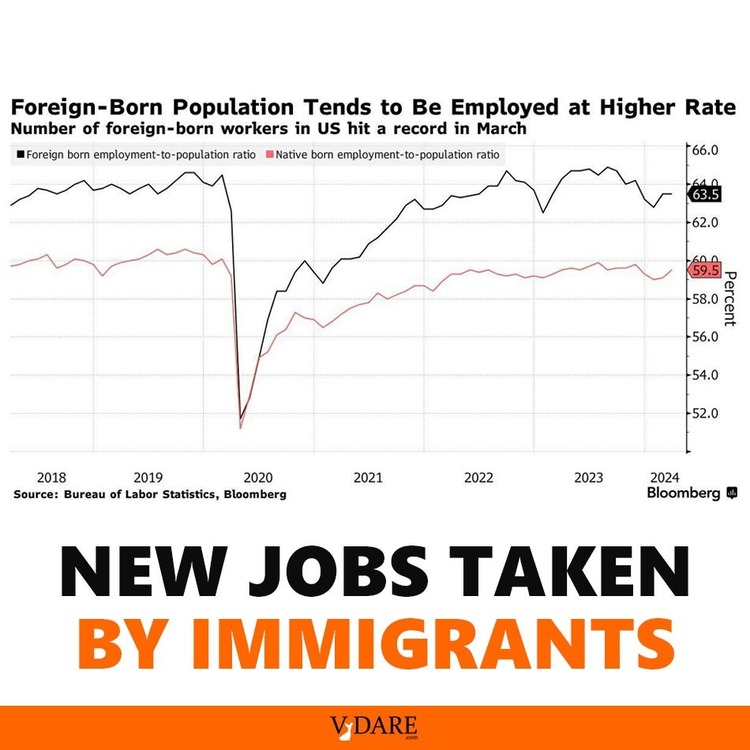
BLOOMBERG: Immigration Will Lead To New Jobs — Which Will Be Taken By Immigrants
04/29/2024
Bloomberg.com’s How the Migrant Surge Is Filtering Through US Data, by Chris Anstey, April 29, 2024 has a bunch of items, but here’s the one that interests us:
Migration Reverberations
The increasingly obvious increase in US population from a surge in immigration over the past couple of years is spurring economists to take a more granular look at data to sift out the impact, as we explain here.
Friday’s US jobs report will likely again show an outsize jump in payrolls, with the 250,000 increase expected for April aligning with economists’ conclusions that the country for now has a faster run rate thanks to the influx of foreign-born individuals.
That would have important implications for the Fed, where Chair Powell has credited immigration as a supply-side boost for the economy, able to generate more expansion without inflation.
Within the labor market, construction, household cleaning, home health aides as well as leisure and hospitality have been showing strong growth, with employment levels in those sectors at or above their pre-pandemic trend. Those are also jobs viewed as more likely to be filled by immigrants.

So Bloomberg is admitting that the jobs are being taken by the immigrants. Note that immigrants being more likely to be employed doesn’t mean they’re better or harder-working than Americans, it’s just that no one goes illegally to a foreign country to be unemployed, and if they really can’t find work, they can go home.
It’s not only immigrants who benefit, it’s people who sell things to immigrants.
But it’s not just jobs that are likely being affected.
With more people entering the country, that means more demand for necessities like food, clothing and shelter. In March, retail sales topped forecasts and inflation-adjusted consumer spending advanced by the most this year.
With more people working in construction, more homes will probably be built, and building projects already underway will finally be finished. That could help alleviate pressure on home prices, especially since the US has struggled with a chronic shortage of housing since the 2008 financial crisis.
The “2008 financial crisis” is what Steve Sailer called here the ”Minority Mortgage Meltdown” — the result of giving too many Hispanics (many of them, incredibly, illegal immigrants) subprime mortgages with no down payment,.
But a good share of immigrants likely won’t be in position to buy homes themselves right away. Some migrants may not show up in housing data for a while if they initially stay with family and friends who are already in the US before finding work. So economists are looking at gauges of rental prices for signs of an upward impact from migration.
An academic study published in February found that an increase in immigration tends to boost the supply of US housing, which in turn made new homes more affordable.
Yes, but who’s living in them? This sounds less like economic benefits for America and Americans, and more like an increase in Mexican and Central American colonization of America, especially as shown by this Parthian shot from Bloomberg’s Chris Anstey:
The immigration story is one that can play out over a period of years as migrants settle. Establishing their own families may yield further population gains — against a backdrop where US births just hit their lowest level since 1979.
